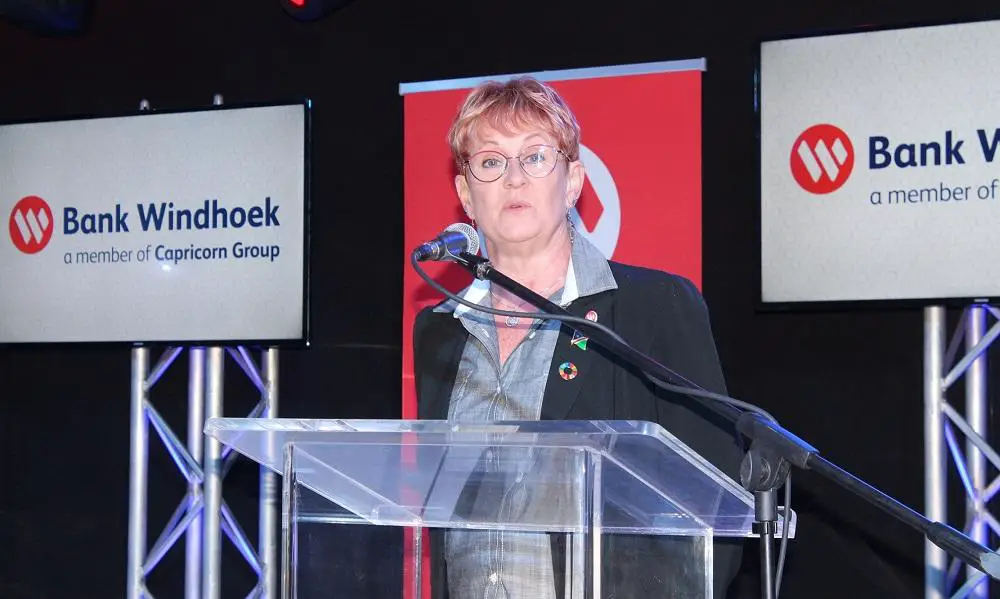- A finance-focused panel at the 2023 Namibia International Energy Conference explored new pathways to financing and developing capital-intensive African energy and infrastructure projects.
- As global financial institutions continue to reduce or eliminate fossil fuel lending, emerging producers such as Namibia are seeking to drive local and regional financial participation in capital-intensive projects and trade infrastructure.
- In addition to leveraging foreign investment as an end within itself, panelists discussed how the sector can leverage foreign support as a means of creating local capacity through regional debt and credit-support instruments.
Namibia is looking to increase local investment in large-scale energy projects moving forward, a panel at the 2023 Namibia International Energy Conference, has concluded.
Under the theme, “Financing Energy & Power Projects: Trends, Outlook & Forecast,” a strategic panel examined how the southern Africa country can finance massive projects and structure deals that benefit regional economies.
As global financial institutions continue to reduce or eliminate fossil fuel lending, emerging producers such as Namibia are seeking to drive local and regional financial participation in capital-intensive projects and trade infrastructure.
“It is critical that we find a new pool of liquidity. Most of the European banks are moving away from hydrocarbon financing and this is clearly affecting projects across Africa,” Southern African Regional Head of Oil and Gas for Standard Bank Paul Eardley-Taylor noted.
He added that over time, Namibia’s request for funding in the energy sector will be billions of dollars and the country will need local banks to ramp up support at every level of the hydrocarbon value chain.
In addition to leveraging foreign investment as an end within itself, panelists discussed how the sector can leverage foreign support as a means of creating local capacity through regional debt and credit-support instruments.
Chief Treasurer for the Bank of Windhoek Claire Hobbs urged local firms to take a more active role in financing Namibia’s energy and infrastructure sectors.
“None of the banks are big enough on their own to take on these mega-projects and service these mega-loans,” said Hobbs.
“In terms of smaller projects, we are prepared and ready. But we must work together to secure regional partners and back local content efforts. Bank Windhoek is 100 percent Namibian-owned and we are focused on supporting local capacity building,” she added.
With a view to increasing the availability of domestic capital, traditionally conservative pension funds have also started getting more involved in the country’s energy sector.
The CEO of government-backed Pension Fund David Nuyoma revealed that his organisation had already invested in a range of new energy projects, concentrating primarily on the renewable energy space.
“Pension funds tend to be particularly risk-averse, but we’ve already made the call that if done correctly, we can do business in this space. We intend to invest incrementally, and have already invested into 105 MW of domestic renewables projects. This year alone, we intend to add 146 MW of generation capacity to our investment portfolio and will be positioned within half of all annual demand,” said Nuyoma.
Simonis, Storm Securities Namibia Managing Director Bruce Hansen added that while local and regional financing efforts are actualizing new developments, such efforts are critical to the long-term success of the Namibian and the African energy industry as a whole.
Read also: Better migration policies can speed up prosperity globally – World Bank
“There are a cocktail of issues influencing global hydrocarbons development, from commodity pricing to portfolio alignment efforts in response to the Paris Agreement. The world will need 10,000MW of generation capacity by 2030, and we need to be innovative in how we structure our capital for deployment,” said Hansen.
A report by the German Agency for International Cooperation (GIZ) indicates that Namibia has a peak load demand of about 630 MW with only 610 MW of grid-connected generation capacity installed in the country.
Of this, 459.50 MW is owned by the state utility NamPower and 150MW is operated by Independent Power Producers (IPPs), mostly photovoltaic.
Namibia has long relied on imported power from South Africa (Eskom), but South Africa’s own economy has put strains on its domestic electricity generation capability and thus its ability to export. Namibia has a power purchase agreement with Eskom which expires in 2025.
NamPower has also diversified its sources of imported power over the short term by signing power purchase agreements with utilities in Botswana, Zambia, Zimbabwe, the Democratic Republic of Congo (DRC), and Mozambique.
Over the long-term, the government and NamPower have committed to making Namibia energy self-sufficient (and eventually a net exporter of power) by building new domestic generation capacity.
